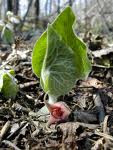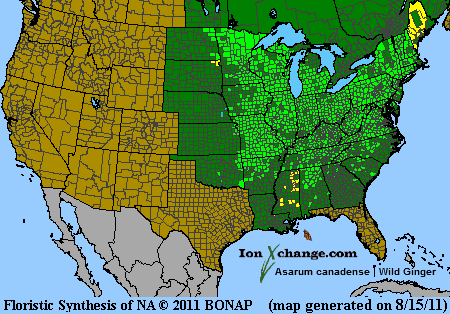 Loading... Please wait...
Loading... Please wait...- Home
- SEEDS
- SEED MIXES
- BUY PLANTS
- Info Request
-
Educational Videos
- Greenhouse Transplanting Demonstration
- Native Seed Cleaning demonstration at Ion Exchange Native Seed and Plant Nursery
- Attracting Butterflies
- Bidens - Bidens cernua Harvest Video
- Big Blue Stem Harvest
- Butterfly Milkweed Video
- Button Blazingstar - Liatris aspera Video
- Buttonbush - Cephalanthus occidentalis Video
- Canada Anemone - Anemone canadensis Harvest Video
- Cardinal Flower - Lobelia cardinalis Video
- Control Burn - Wildflower Field
- Cream Gentian - Gentiana flavida
- Culver's Root - Veronicastrum virginicum Video
- Cup Plant - Silphium perfoliatum Video
- Dormant Seeding | Planting
- Earthyman's Favorite Wildflowers Video
- Eco-Friendly Golf Course Seed Mix
- Floating Islands
- Fringed Loosestrife - Lysimachia ciliata Video
- Giant Yellow Hyssop - Agastache nepetoides Video
- Indiangrass - Sorghastrum nutans Video
- Iowa Prairie Partner Program
- Leadplant - Amorpha canescens (Potted) Video
- Meadow Blazingstar - Liatris ligulistylis
- Midland Shooting Stars - Dodecatheon meadii Video
- Native Plant Nursery Field Irrigation Experiment
- Nodding Onion - Allium cernuum Video
- Ohio spiderwort - Tradescantia ohiensis Video
- Old Man's Beard - Clematis virginiana blooms Video
- Oxeye Sunflower - Heliopsis helianthoides Video
- Prairie Spiderwort - Tradescantia bracteata
- Purple Coneflower - Echinacea purpurea Video
- Rain Garden or Water Garden Video
- Rattlesnake Master - Eryngium yuccifolium Video
- Riverbank Stabilization - Wetland Plants
- Rose Mallow - Hibiscus militaris Video
- Rosinweed - Silphium integrifolium Video
- Royal Catchfly - Silene regia
- Showy Tick Trefoil - Desmodium canadense Video
- Sneezeweed - Helenium autumnale Video
- Swamp Betony - Pedicularis lanceolata Video
- Swamp Milkweed - Asclepias incarnata Video
- Sweet Blackeyed Susan - Rudbeckia subtomentosa Video
- Tall Coreopsis - Coreopsis tripteris Video
- Urban Butterfly Garden
- Wild Bergamot - Monarda fistulosa Video
- Wild Geranium - Geranium maculatum Harvest
- Wild Goldenglow - Rudbeckia lanciniata Video
- Wild Petunia - Ruellia humilis Harvest Video
- Woodland Knotweed - Polygonum virginianum Video
- Yellow Coneflower - Ratibida pinnata Video
- Blog
- Resources
- Policies
Contact Us
Phone:
563-419-0837
or 563-535-7231
Email:
hbright@ionXchange.com
Browse Products
Add to Wish List
You Recently Viewed...
Our Newsletter
Product Description
Wild Ginger (Asarum Canadense) - Distinctive (roughly heart-shaped) leaves, an unusual fleshy deep maroon to rich brown flower and the aroma of the crushed root are all characteristics of Asarum canadense.
The flower is so low on the stem that it often grows into or even under the mulch of the forest floor. The references to "ginger" for this species come from a couple of different sources; the first when the root is crushed, a very spicy ginger-like aroma can be smelled. The second comes from the fact that this plant actually was (and still is, in some circles) a serviceable substitute for Jamaican Ginger. It flowers from April through May and grows in large groups. A. canadense is common across southern Canada and the northern US; it is also found in moist coniferous forests in California and Oregon, through the Carolinas and Georgia and south through Missouri and Texas. Many insects are attracted to Wild Ginger. Purportedly, ants pollinate the plant. Disliked by deer and other mammals; however an important food source to the Pipevine Swallowtail Butterfly.
Aristolochiaceae Family - Wild Ginger, Sierra Wild Ginger, Canada Wild Ginger, Asarabacca, Broad-leaved Sarabacca, Catfoot, Colic Root, Colt's Foot, False Colt's Foot, Ginger Root, Snakeroot, Canada Snakeroot, Vermont Snakeroot, Southern Snakeroot, Coltsfoot Snakeroot, Black Snakeroot, Heart Snakeroot, Black Snakeweed, Snakewood, Heartroot, Hot Potato, Sturgeon Potato, Indian Ginger.
Asarum from the Greek Asarum, the name of a species found in ancient Grecian times and canadense meaning "of Canada".
| Sun Exposure | Woodland |
| Soil Moisture | Mesic, Wet Mesic, Dry Mesic |
| Bloom Time | Spring, Early Summer April, May, June |
| Bloom Color | Red |
| Max Height | 6 inches |
| Wetland Code | UPL |
| Germ Code | L |
| Seeds Per Packet | |
| Seeds Per Ounce |
Early settlers used the root as a substitute for Jamaican Ginger; the also sometimes boiled the roots with sugar to make a very palatable candied spice. Early physicians used wild ginger extensively to treat whooping cough. It was also used to calm an upset stomach, chest conditions, fevers, heart rhythm irregularities and many other ailments. The root of Wild Ginger is a powerful medicine for inducing sweating to help break a fever. Author A. Hyatt Verrill was probably referring to Wild Ginger when he wrote, "Many a white man owes his life to the medicinal knowledge of the Indians, and I can personally testify to the efficiency of Indians as physicians, for I was safely brought through an attack of yellow fever by Indians and Indian medicines." Here in Iowa, it was the single most important seasoning for the Meskwaki Tribe. In addition to that, they also believed that eating wild ginger root eliminated the chance of poisoning from eating the meat of animal that had died from unknown causes. And if that wasn't enough, they also chewed the root and spit it on their bait thinking it improved the chance of catching fish.
Edibile Uses:
The underground stem and the flowers are used as a ginger substitute. The root, especially when quite dry, has a pungent, aromatic smell like mild pepper and ginger mixed, but more strongly aromatic. The root is best harvested in autumn but is available all year round. It can be dried for later use.
Medicinal Uses:
Snake root was widely employed as a medicinal herb by a number of native North American tribes who used it to treat a wide range of ailments. It is still occasionally used in modern herbalism. The root is anthelmintic, carminative, diaphoretic, diuretic, expectorant, irritant, powerfully stimulant, stomachic and tonic. It is harvested in the autumn and dried for later use. It is used in the treatment of chronic chest complaints, asthma, coughs, colds, dropsy, painful spasms of the bowels and stomach, scant or painful menstruation, infantile convulsions. The fresh leaves are applied as a poultice to wounds and inflammations, whilst a decoction or salve is applied to sores. The root contains antibiotic substances effective against broad-spectrum bacteria and fungi. It also contains aristolochic acid, which has antitumor activity. The root and rhizome were slowly boiled in a small quantity of water for a long time and the resulting liquid drunk as a contraceptive by the women of one N. American Indian tribe.Root tea is drank for whooping cough, flatulency, indigestion, fevers, colds and heart conditions, or used to promote sweating. Teas are also drank as an expectorant.













